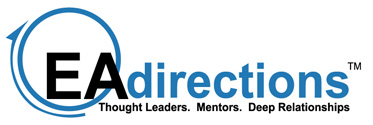As organizations continue to struggle with the complexity and amount of change to deal with, the EA team plays a crucial role in laying a foundation of adaptability for the organization to build from. Once an organizations has done an acceptable job of providing a standardized infrastructure and at least basic governance of infrastructure standards, focus tends to shift towards the application portfolio and integration approaches. This is natural and seems to conform to most of the evolutionary models of EA, such as the one from MIT Sloane CISR in Enterprise Architecture as Strategy. However, I would like to provide you with an alternative to consider as I see organizations continually struggle with business units demanding more uniqueness to the functional systems they need to run their part of the business.
I think the key for some organizations to achieve a more adaptive environment is to focus on architecting the information and integration environments. If information was more standard and consistent BETWEEN information systems with a common integration architecture (standard methods, components, messages, and middleware), then the information systems themselves could be unique functionally. The architecture would need to provide the means of translating information formats and content from systems into the standard format and content for sharing outside the system. This would also support SOA approaches, cloud computing strategies, mobility, and other approaches being pursued today.
As an EA team, are you focusing on the functionality of a specific area or are you leaving that to the project team, so that you can focus on the shared aspects of an application environment, namely the information assets and integration capability across the enterprise?
